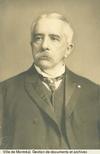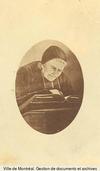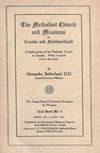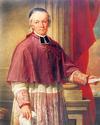recalled the history of the Séminaire de Saint-Hyacinthe, emphasizing the clergy’s claims to fame and its role in maintaining the national character. Thus, despite appearances, the marriage of Pierre Boucher
Toronto’s Hibernians prowled the streets in search of an alleged Orange mob. The event, though condemned by the press and some Catholic clergy, underscored how Boyle and the Hibernians had parted ways with
object of the attention of local clergy during the assizes. Jackson saw him “every day but one” and claimed, “Never have I witnessed so great an instance of obduracy and insensibility.” Eventually, however
admitted, “It is a consolation for me to know that I am not a stranger to the diocese, that I am returning, as it were, to the home of my childhood, amongst kind and esteemed friends of the clergy and laity
dogmatic theology at the Grand Séminaire de Lyon. In his first years of teaching Faillon prepared two hagiographical accounts for his pupils, and more especially for clergy engaged in pastoral work in
the revolution. In 1790 Fournier was required to swear loyalty to the Civil Constitution of the Clergy. Like his superiors and colleagues among the Sulpicians in Orléans, he refused and chose to abandon
Catholic clergy because of its secular nature. Marguerite would serve as the group’s treasurer from its inception to 1886, its president from 1887 to 1905, and an honorary president from 1911 to 1913 and
to the clergy reserves, emerged as a highly divisive political and religious problem, adding to the litany of grievances against Maitland. Under the Constitutional Act lands had been set aside for the
Reverend Salter Jehosaphat Mountain as garrison chaplain. It seems to have been the practice for chaplains to assume other clerical duties in order to supplement their income and support the local clergy
was symptomatic of a greater malaise; they ascribed the deplorable state of the Church of England in the colony to the policy of appointing French speaking clergy, who, they argued, knew little of the
Trinity.
The threat of secularization of the clergy reserves led to another commission from the bishop. In 1854 McMurray was sent to watch the
sometimes came into conflict over money matters. For example, during the school year 1853–54 a movement demanding revision of salaries developed among the clergy attached to the college as teachers. For some
numbers of Catholic clergy in the years following the conquest, as well as the weak position of the ecclesiastical authority in its dealings with the new rulers. Pouget’s career as a priest further
annual return of vacant posts and of transfers within the clergy. In making this exaction Prescott was more likely concerned to protect himself from an angered prince by demonstrating a desire “to assert
.
Sutherland linked the church’s missionary program to settlement. Along with other Methodist clergy and lay entrepreneurs such as John Jacob Withrow
“shillings.”
Cartier and Langevin represented L’Avenir’s main adversaries, the La Fontaine-Baldwin party and the clergy, Mélanges
.
Several important tasks awaited the new bishop. The theological and spiritual training of the clergy was distinctly inadequate at the time, a situation Lartigue wanted to remedy quickly. In 1825 he
.
Like other loyalist clergy in rural missions, Arnold experienced difficulties securing financial assistance from his congregations, whom he described in 1791 as “exceedingly poor,” with “a very rugged
.
One of Boulton’s first acts in the assembly had been to present a petition asking that the portion of the clergy reserves set apart for the Church of England be given up to it. In 1845 he spoke out
is now all but forgotten. He represents, however, that group of clergy, all chaplains, who served as a stopgap while the Church of England pondered the best pastoral approach to a colonial population













